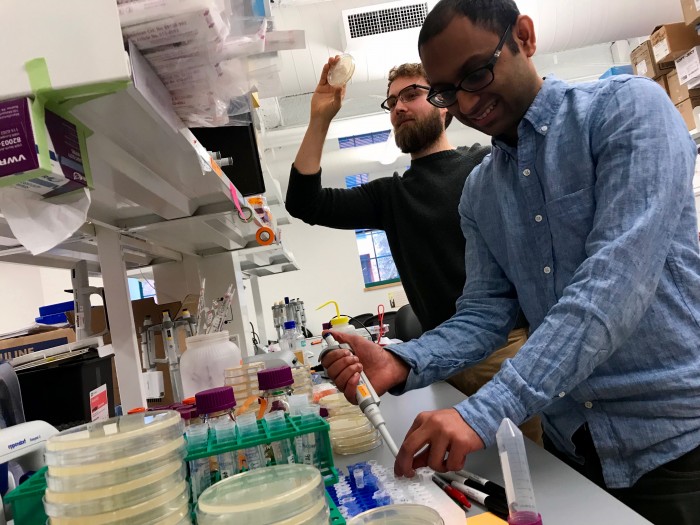Biologists would love to program cells as if they were computer chips

Sitting in his startup lab space on the outskirts of MIT’s campus, Alec Nielsen opens his laptop and types in instructions for a genetically modified yeast cell that will glow yellow. He tells the program what sugars he plans to feed the cell—arabinose and lacctose—and specifies that it should make a fluorescent protein normally found in jellyfish.
The computer takes about 60 seconds before spitting out a list of roughly 11,000 letters of DNA, along with what looks like a circuit diagram.
Nielsen heads a startup called Asimov that is trying to automate the design of sophisticated genetic modifications. Its software, called CELLO, is modeled on the type used to plan electronic circuits and computer chips with billions of transistors.

Biology research, for the most part, is experimental. You don’t know what will work until you try it. But Asimov thinks it can take some of the guesswork out of making engineered organisms. “We decided a couple of years ago to take this very complex problem and make it as simple as programming a computer,” says Christopher Voigt, an MIT professor who is a cofounder of the company. “We starting thinking of how to pull the tools of electronic circuit design into genetic circuit design.”
Manufacturing proteins, biofuels, or chemicals inside cells isn’t new. That is where insulin, alcohol, and the enzymes in laundry detergent come from. But getting a microbe to make what you want—when you want—without dropping dead from the effort isn’t easy.
Now scientists are designing a new generation of organisms that do more than continuously pump out gene products like factories. They want them to sense and respond to environmental cues, turn on at certain times, or become smart cancer drugs that are deadly only inside a tumor.
A few products with such “switches” in them are already in development. A company called Synlogic is testing bacteria with a gene circuit in it that people are swallowing as part of a clinical trial. Big drug companies have started acquiring startups with ideas for new cancer-fighting cells.

Voigt’s lab spent the last decade developing genetic switches that perform basic logical tasks, such as waiting for two biological signals before turning on.
In 2016, he, Nielsen, and others demonstrated the CELLO software, which so sped up genetic design that they were able to build 52 such circuits in about a week’s time. More than two-thirds actually worked. “It condenses years of work into a few weeks,” Voigt says. “We spent a lot of time figuring out why the basic elements fail and how to fix them, and how to insulate the system so they would work in all different combinations.”
Asimov raised funds from Andreessen Horowitz, the Silicon Valley venture capital firm, which has a $450 million fund it is investing in biotech companies that incorporate concepts from software or computer engineering. Asimov’s plan is to design circuits for customers and deliver the DNA constructs they need.
If biological design can be made more predictable, Nielsen sees few limits on what it could be used for. “We think genetic circuits will start appearing in all of the products that touch our lives every day, from foods to clothes to medicines,” he says.
Deep Dive
Biotechnology and health
How scientists traced a mysterious covid case back to six toilets
When wastewater surveillance turns into a hunt for a single infected individual, the ethics get tricky.
An AI-driven “factory of drugs” claims to have hit a big milestone
Insilico is part of a wave of companies betting on AI as the "next amazing revolution" in biology
The quest to legitimize longevity medicine
Longevity clinics offer a mix of services that largely cater to the wealthy. Now there’s a push to establish their work as a credible medical field.
There is a new most expensive drug in the world. Price tag: $4.25 million
But will the latest gene therapy suffer the curse of the costliest drug?
Stay connected
Get the latest updates from
MIT Technology Review
Discover special offers, top stories, upcoming events, and more.